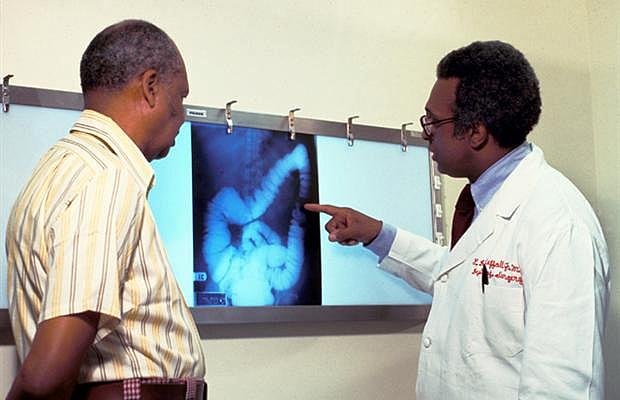Talking Cancer: Tips from the International Workshop for Scientific Journalism

I was fortunate enough to be asked by the National Cancer Institute to speak to a group of journalists and health agency professionals earlier this month in Buenos Aires. I was thrilled to meet so many talented and dedicated journalists in one room, and I had a chance to talk about how to best write about disease with people like Nora Bar from La Nacion in Argentina, Dr. Otis Brawley, the chief medical officer for the American Cancer Society, Ivan Oransky, the editor for Reuters Health, and Nelvis Castro, the associate director for multicultural and international communications at the National Cancer Institute. The event's discussions were so fruitful that I wanted to share some of the tips with you for writing about cancer and other diseases.
The first few tips are below.
1. Approach cancer care ethically, logically, and rationally. This came up over and over in the two-day "Cancer Research in the Media" symposium. Brawley said it best: "Very frequently, the public, the press, and doctors confuse what they believe with what is scientifically known. And very commonly, after five, 10 or 15 years of doing something, we find out something we were doing is actually wrong."
2. Try to understand the differences between cancers. As the National Cancer Institute points out, there are more than 100 different types of cancer. This is because the disease, at its core, is such a basic deviation from the norm. It happens when cells start dividing uncontrollably and damage other healthy cells and tissues. The very idea of conducting workshops like the one in Buenos Aires started, in part, because journalists were treating all cancers exactly the same way: a threat that needed to be found early and treated aggressively. But finding cancer early only lowers mortality in certain cancers. And treating all cancers aggressively can do more harm than good. The good news is that journalists want to understand and explore these differences. Castro told me that when they first started training journalists, they found that there was a huge audience out there of reporters who want better tools to make sense of health evidence and translate it for readers. I certainly saw that in Buenos Aires.
3. Beware of promises of cures just around the corner. Roberto Marmolejo Guarneros, an editor at CNN Mexico, asked the group to remember the hype surrounding "pink Viagra" a few years ago. The drug, flibanserin, was promoted by Boehringer Ingelheim for something being called Hypoactive Sexual Desire Disorder. Then, in 2010, the company decided to stop developing the product after an FDA panel said the benefits of the drug did not outweigh the risks. "Everyone was talking about this drug, and everyone was writing about this drug, but then it didn’t go anywhere," Guarneros said.
I’ll provide more tips on Friday and in future posts.
Related Content:
How We Do Harm: Otis Brawley's new book skewers 'gluttony' of over-diagnosis, medical treatment
Moments of Failure: An Oncologist's Perspective
What Doctors Don't Know & Journalists Don't Convey About Screening May Harm Patients
Photo credit: TipsTimes via Flickr

